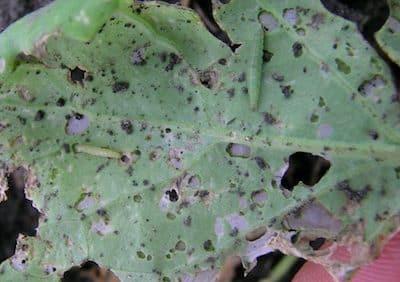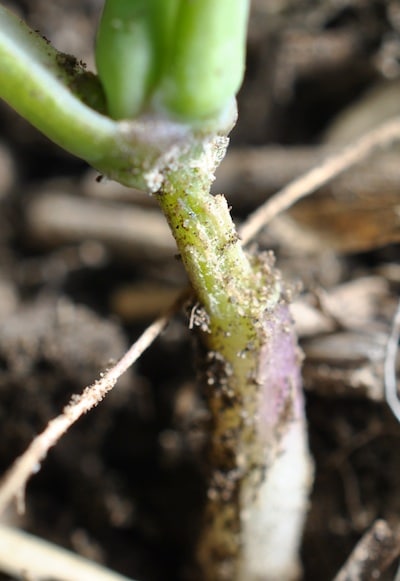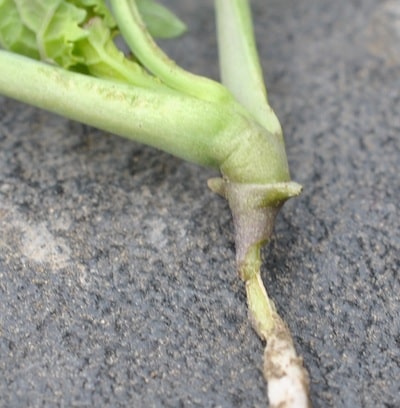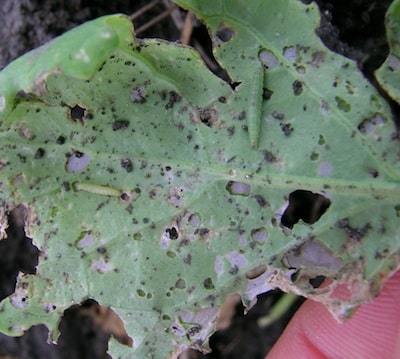
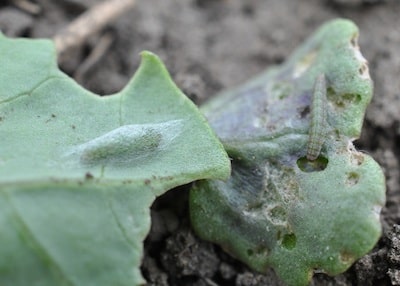
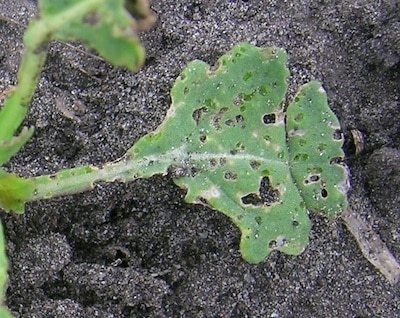
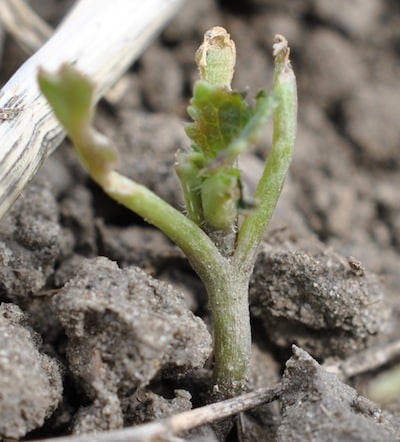
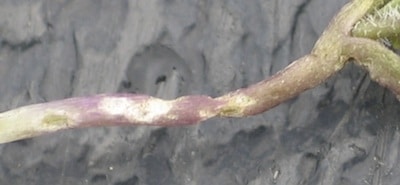
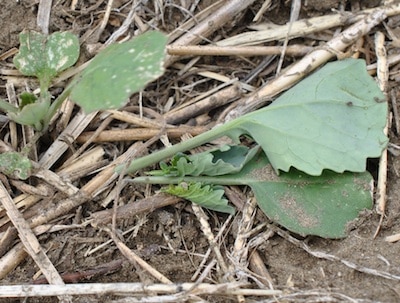
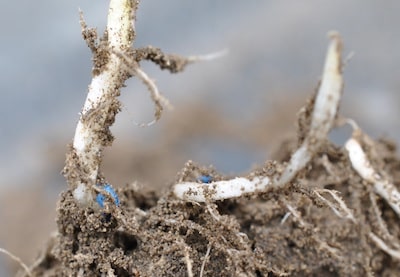
Cutworms. This is the most versatile family of feeders. They can eat canola plants before they emerge, leaving blank patches. Some species can cut plants off at the surface, leaving a toppled plant on the ground. They also climb the foliage and munch away.
Flea beetles. They take small nips out of the topside of leaves, and in windy or wet conditions, can take small nips out of the underside of leaves and on stems. With many nips in one place, they can clip off entire cotyledons or stems.
Diamondback moth. Diamondback larvae feeding can include mining inside the leaf by first instars. Later instars will chew from underneath the leaf, leaving only the top waxy layer — giving a window pane look. Later instars will also chew through the leaf or at leaf edges.
Wireworms. They feed only underground, and will often leave bare patches, just like a cutworm. In this case scouting is essential. If wireworms are the cause, spray will not reach them and is ineffective. If cutworms are the cause, spray can be effective.
Gophers. Of course these aren’t insects, but they can wipe out large sections of a field. Without close inspection, damage can look like wireworm or cutworm carnage.
Industry note* Bertha traps are in short supply. If you have one and don’t plan to use it this year, contact Sean Miller of the Saskatchewan Ministry of Agriculture. He will redeploy the trap to someone else.
